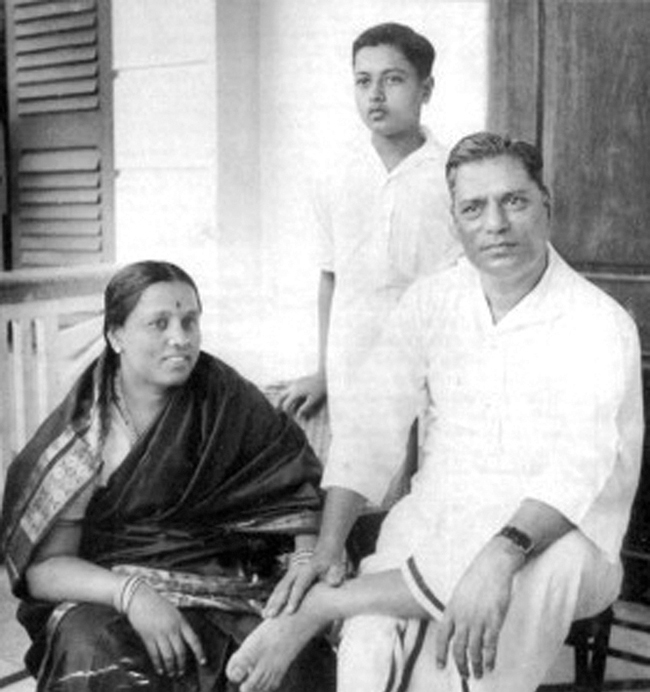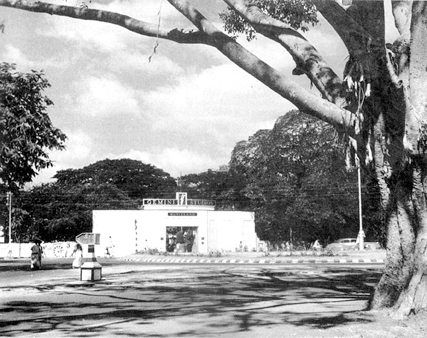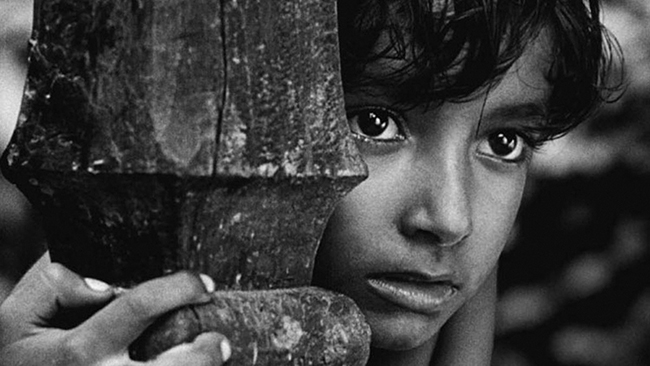Registered with the Registrar of Newspapers for India under R.N.I 53640/91
Vol. XXXIII No. 19, January 16-31, 2024
Tales from Gemini Studios
-- by V.Vijaysree (v.vijaysree@gmail.com)
Recently, the American nephew asked if we could visit Gemini Studios, the next time we find ourselves in the old hometown. I tell the teenager the studio was defunct even by the time I was in my teens. Besides, I am not sure Gemini Studios was ever like the famous Universal Studios in California, which offers guided tours.
The boy’s curiosity, however, made me revisit the bilingual writer Ashokamitran’s slim memoir, Fourteen Years with Boss. The owner of Gemini Studios, S.S. Vasan, was Ashokamitran’s father’s friend. In 1952, following the father’s premature death, the bereaved eldest son Ashokamitran started working as a public relations officer at the film studio.
The job was not a good fit for a quiet young man, but Ashokamitran would acquire a wealth of material to draw on once he became a full-time writer. His novel Karainda Nizhalgal/Star-crossed, for instance, featured characters from the film industry as did Mansarovar. Pritish Nandy, the editor of The Illustrated Weekly, encouraged the author to write specifically about his stint at the famous studio of the south, ran those essays in the magazine in 1984-85, and the compilation turned into a memoir.
Despite his understated style, Ashokamitran makes no bones of the fact that the movies from Gemini Studios were too full of spectacle and sparse on reason. Consider for instance, the 1955 film Insaniyat. It had two top Hindi actors Dilip Kumar and Dev Anand in the lead and yet the star who stole the show was a chimpanzee from the United States called Zippy. In fact, Vasan brought the famous Hollywood ape into the story, halfway through the shooting, with the specific intent of enlivening an otherwise dull film.
Earlier that year, Life magazine had run a photo feature of Zippy the chimpanzee which lived in a suburban home in New York. The ape, which could rollerblade, reportedly ate at the family table with its owners and though it used silverware, it tended to hoot upon seeing the food. Zippy’s co-actors in show business liked the six-year-old, 38-pound ape because it never bit them.
Good behavior is not something you can take for granted in showbiz chimps. Being wild animals, they turn aggressive anytime. When Ronald Regan became President of the US, comedians on late-night television shows often alluded to his 1951 film, Bedtime for Bonzo, where his co-star was a chimp, to get some easy laughs. But during the making of the film, the chimpanzee Bonzo (real name Peggy) had pulled hard on Reagan’s necktie and nearly strangled him – no laughing matter.
Zippy, the chimpanzee, fortunately did not lose its cool even in the heat of a Madras summer. Important people in the city lined up to meet Zippy at Gemini Studios. There is a picture of Zippy, typing something, at the head office of The Hindu. In a publicity picture, Zippy was “pretending to smoke a cigar big enough to send Samson reeling.” It is impossible to read such things without cringing now, but a genteel Ashokamitran probably cringed even back in the 1950s, when city’s VIPs rushed to meet the chimp.
 S.S. Vasan, wife Pattammal and son Balasubramaniyan at the terrace of Gemini House. Picture Courtesy: Musings Archive.
S.S. Vasan, wife Pattammal and son Balasubramaniyan at the terrace of Gemini House. Picture Courtesy: Musings Archive.When Insaniyat hit the screens, again, it was Zippy’s appeal which drew the crowds. The plot was set in a mythical kingdom, whose king is dressed in a Roman soldier’s outfit and wears cowboy boots. By then, Bollywood had largely moved on from what we locally call raja-rani padams. The highest-grossing film of 1955 was Raj Kapoor’s hugely enjoyable social Shree 420. Vasan’s Insaniyat was not remade in Tamil. It was not a hit, not by a long shot. Was it time for Vasan to rethink big sets, big stars, and performing animals?
In any case, the Hindi film Insaniyat was contracted to play in a cinema in Calcutta from a certain date, but the theatre owner was in a bit of a dilemma. A debut film by an unknown young Bengali was proving to be unexpectedly popular. The theatre owner asked Vasan if he could extend the film’s run a little? Vasan would have none of it, but to his credit, he brought back a copy of that Bengali film made by that young filmmaker to Madras.

A select audience had gathered to watch the film in a projection theatre at Gemini Studios on a company holiday. Ashokamitran, who’d wandered in, writes lyrically about the experience. “Vasan and his close associates were watching a film. … The film was something I had known nothing about; I didn’t know the language, but I found myself throbbing with a surge of emotion, such as I had never experienced before. The film was over, but Vasan ordered it to be run again… I am sure I wasn’t the only one in the theatre to be so deeply, so completely moved. Vasan’s face revealed nothing but there he was, seeing the film all over again. When the film was finally over, I had to be alone and so I walked all the way back home.”
 A still from Pather Panchali. Picture Courtesy: The Hindu.
A still from Pather Panchali. Picture Courtesy: The Hindu. The name of the film that crossed the path of Insaniyat in Calcutta? It was Pather Panchali, the first movie in Satyajit Ray’s Apu Trilogy. The director, who shot the film on a shoestring budget, had worked with untrained actors. Ray would go on to win an Academy Honorary Award, for “his rare mastery of the art of motion pictures, and of his profound humanitarian outlook, which has had an indelible influence on filmmakers and audiences throughout the world.” But that was decades later.
Back in 1955, on Deepavali Day, Vasan sat in a darkened preview theatre in the city, watching this Bengali film, which the world would later call a masterpiece. The film was not the boss’s cup of tea, writes Ashokamitran, and quips – why the boss may not have considered it tea at all! Anyone, who knows old Indian films already knows that Vasan viewed cinema as entertainment for the masses. Ray’s films appealed to intellectuals or those who want to be considered intellectuals. Their styles of cinema were polar opposites.
And yet the owner of Gemini Studios watched Pather Panchali over and over again. Did it remind Vasan of his own impoverished childhood in rural Tamil Nadu? Did he actually like the film? Or was the hit filmmaker looking for elements he could incorporate into his next blockbuster? We may never know. But the fact that movie mogul patiently watched an arthouse classic, which even the sophisticated Salman Rushdie admits having slept through the first time he viewed it in Bombay, is delightful. The book is strewn with such unexpected gems.
The landmark studio in Madras, known for its cinematic extravaganzas, is long gone but through his spare writing, Ashokamitran, a writer of nuance, has captured facets of his old workplace – the good, the bad, and the ridiculous – for posterity. Still, in the end, it is a rare case of a boss getting a big, unforeseen bonus.


Comments